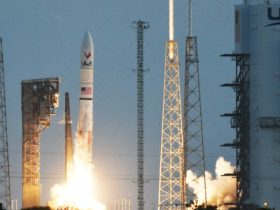The U.S. is in the final stages of sending almost $570 million in security assistance to Taiwan — the largest such package to date, and one sure to frustrate China — according to multiple congressional aides and a U.S. official.
The administration will use its fastest tool available to deliver the aid: directly shipping its own stocks, a process it’s heavily relied on to support Ukraine’s self-defense. This $567 million package has already received the Pentagon’s approval and is now awaiting the president’s signature.
As it stands, it would be almost double a package of $345 million sent last year. The president will likely approve the tranche before the fiscal year expires at the end of the month, said one aide and an official, who like others speaking for this story were not permitted to talk to the press and were granted anonymity.
The new package of aid has not been previously reported.
Taiwan is by far the most delicate issue in America’s relationship with China. Beijing maintains the democratically governed island is part of its rightful territory, and won’t rule out military force to one day unite with it. The U.S., meanwhile, is Taiwan’s oldest and largest supplier of military aid.
The impasse often leads to public displays of frustration. At this year’s Shangri-La Dialogue, Asia’s largest defense summit, China’s Minister of National Defense Adm. Dong Jun warned that supporters of Taiwanese “separatists” would be punished — shortly after China’s military held large drills around the island.
And in a briefing this week, a spokesperson for China’s Ministry of Foreign Affairs condemned U.S. military support, arguing it “sends a wrong message to ‘Taiwan independence’ separatist forces.”
Still, at a September defense conference hosted in Beijing, which a top Pentagon official for China attended, members of the People’s Liberation Army were gentler. The month before, U.S. National Security Advisor Jake Sullivan also traveled to China, where he met with senior members of the government and helped schedule a long-sought call between America’s top military leader in the region and his Chinese counterpart.
The security assistance will fund training, stockpiles, anti-armor weapons, air defense and multi-domain awareness, according to a U.S. official, who would not be more specific. It will also include drones, which are key to America and Taiwan’s “asymmetric” strategy to defend the island against China’s much larger military.
The ambiguity is typical for aid to Taiwan, which the U.S. rarely discusses in detail due to its sensitivity. Neither the Pentagon nor the National Security Council would comment for this story, except to say that America maintains the right to support Taiwan’s self-defense, per longstanding government policy.
“We have no comment on this matter. Taiwan will continue to enhance defense capabilities and closely work with the United States so as to actively uphold peace, stability and prosperity across the Taiwan Strait and in the Indo-Pacific region,” a spokesperson for Taiwan’s unofficial embassy in Washington said in a statement.
In an effort to hasten support for Taiwan, Congress gave the administration the authority to send Taiwan up to $1 billion in its own stocks each year — a more direct show of support than previous assistance from arms sales. That said, lawmakers didn’t give the Pentagon an actual budget, and the department has been loathe to send equipment it can’t replace.
After debating a further package of aid last year — one supported by members of the State Department and White House — Secretary of Defense Lloyd Austin paused any further aid to Taiwan without funding.
That money arrived in April, when Congress included $1.9 billion to replenish U.S. stocks sent to countries in the Indo-Pacific. Leaders across the Pentagon have since been planning how to use that funding, most of which will go to Taiwan.
The package now close to approval went through several rounds of revisions, according to multiple officials. The Pentagon initially planned a smaller amount, but in a meeting of different parts of the administration this summer, multiple senior officials said it needed to be far larger — leading to the expanded $567 million figure.
The Pentagon is also now working on a third package of drawdown aid to Taiwan, which the government plans to complete by the end of the administration in January, the U.S. official said.
The April bill featured a further $2 billion in longer-term security aid for the region, $1.4 billion of which went to Taiwan in a separate package approved — though never announced — this summer. The U.S. green-lit the sale of $228 million in repairs and spare parts for military kit this week, adding to the $19 billion in such foreign military sales Taiwan is waiting on for delivery.
A Pentagon watchdog recently published a scathing report on the first round of support last year. It found that shipping issues caused by the American military led to aid arriving in Taiwan later than expected, covered in mold and in some cases expired. Fixing the issues cost the two sides a further $730,000.
“More broadly, the delivery of non-mission-capable items inhibits the [Defense Department’s] ability to achieve established security cooperation goals and may lead to loss of partner confidence in the United States,” the report said.
Noah Robertson is the Pentagon reporter at Defense News. He previously covered national security for the Christian Science Monitor. He holds a bachelor’s degree in English and government from the College of William & Mary in his hometown of Williamsburg, Virginia.
Read the full article here








Leave a Reply